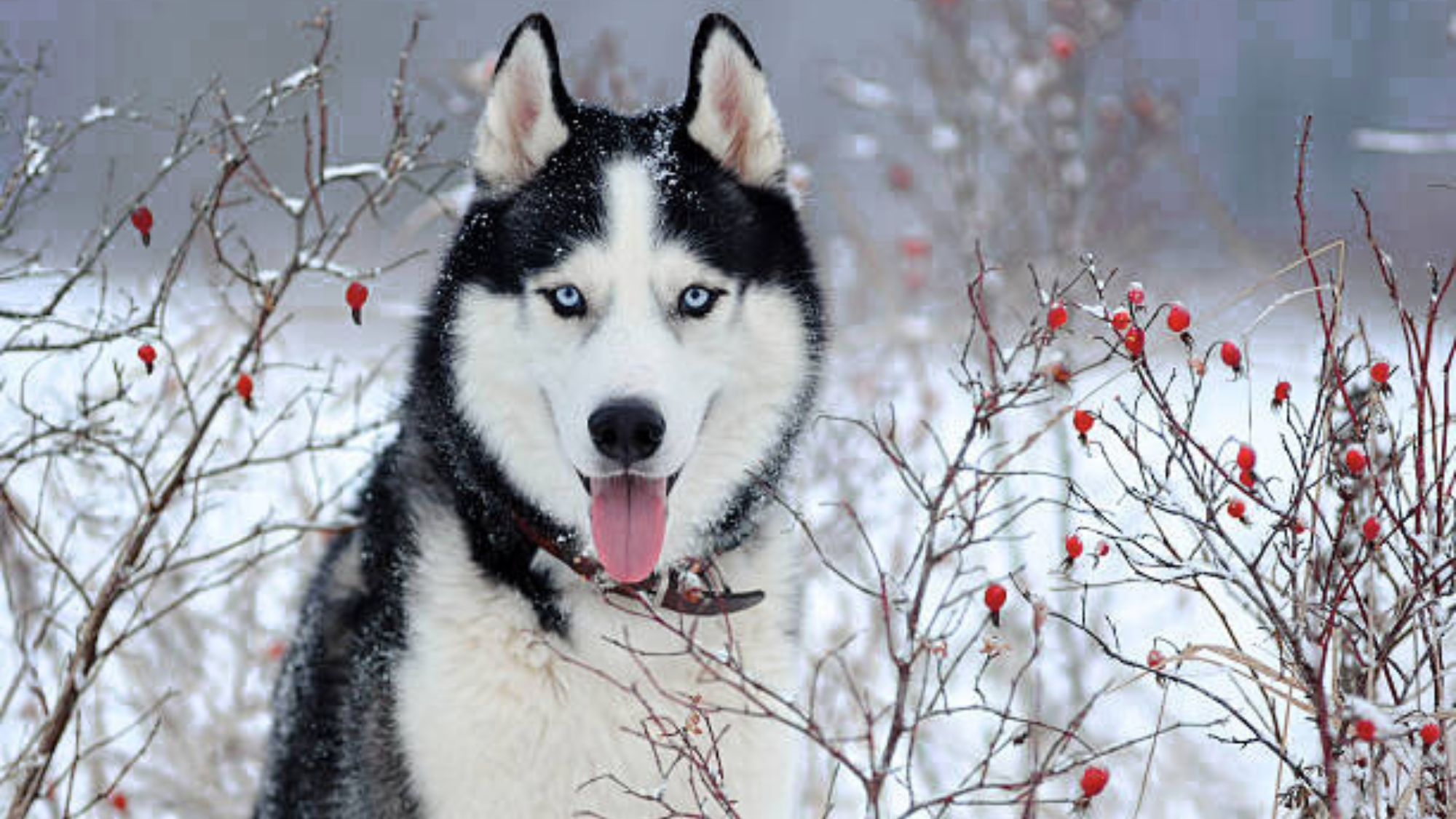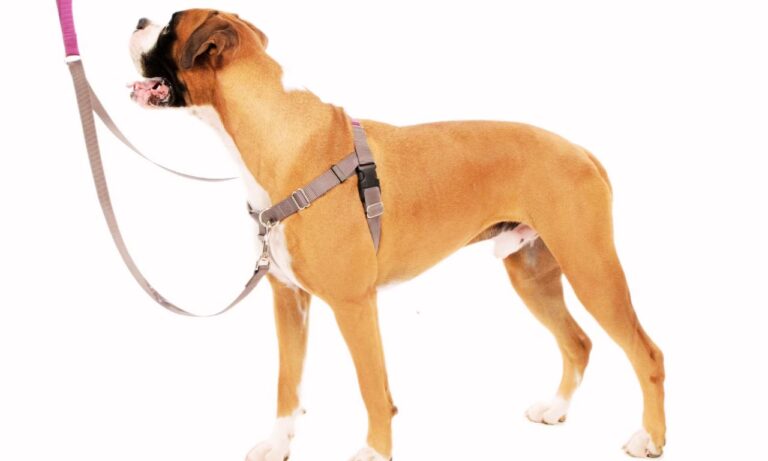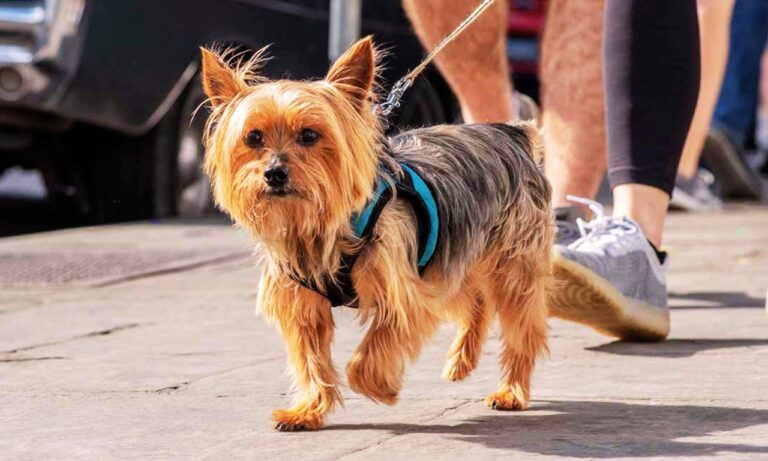Alaskan Huskies are remarkable dogs — lean, athletic, and bred for performance. They aren’t purebred like Siberian Huskies; instead, they are a working dog type developed over generations for endurance and speed, often used in sled dog racing. If you have an Alaskan Husky or are thinking about adding one to your family, you’re probably wondering: How big will they get? and Is my Husky growing properly?
In this detailed guide, we’ll explore the average Alaskan Husky weight chart by age, what influences their size, and how you can support their healthy development at every stage. Get insights into what is best for Dachshunds: a collar or harness for their safety, comfort, and health during walks.
Blog Highlights
ToggleWhat Is the Average Weight of an Alaskan Husky?
Unlike AKC-recognized purebred dogs, Alaskan Huskies vary more widely in size because they were bred for performance traits, not appearance.
Generally speaking:
- Adult male Alaskan Huskies weigh between 40–60 pounds (18–27 kg).
- Adult female Alaskan Huskies weigh slightly less, around 35–55 pounds (16–25 kg).
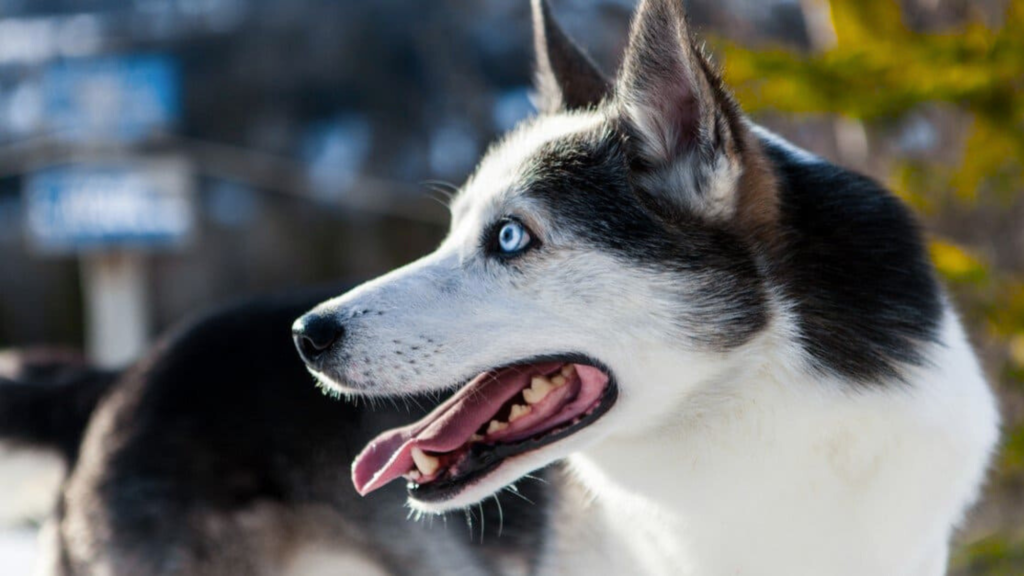
However, some exceptional sled dogs can weigh outside these ranges, especially if bred specifically for different race types (e.g., sprint vs long-distance).
The key takeaway: Alaskan Huskies are medium-sized, with a build that favors lightness, stamina, and speed.
Alaskan Husky Weight Chart by Age
Here’s a typical weight timeline for an Alaskan Husky growing from puppyhood to adulthood.
| Age | Average Weight (lbs) | Average Weight (kg) |
| 8 weeks | 8–15 lbs | 3.5–6.8 kg |
| 3 months | 15–25 lbs | 6.8–11.3 kg |
| 4 months | 20–30 lbs | 9–13.6 kg |
| 5 months | 25–35 lbs | 11.3–15.8 kg |
| 6 months | 28–40 lbs | 12.7–18.1 kg |
| 8 months | 32–45 lbs | 14.5–20.4 kg |
| 10 months | 35–50 lbs | 15.8–22.6 kg |
| 12 months | 40–55 lbs | 18–25 kg |
| 18 months | 40–60 lbs | 18–27 kg |
Most Alaskan Huskies will reach about 90% of their adult weight by 12 months but may continue to fill out and add muscle up to 18 months.
Because they are working dogs, their final “adult weight” often depends on training intensity, diet, and overall activity level.

How Fast Do Alaskan Huskies Grow?
Alaskan Huskies grow incredibly fast during the first six months. This early growth stage is crucial because it lays the foundation for healthy bones, joints, and muscles.
By:
- 3 months: They’ve doubled or tripled their birth weight.
- 6 months: They are often about 60–70% of their final adult weight.
- 12 months: They look almost full-grown but may still need time to fill out.
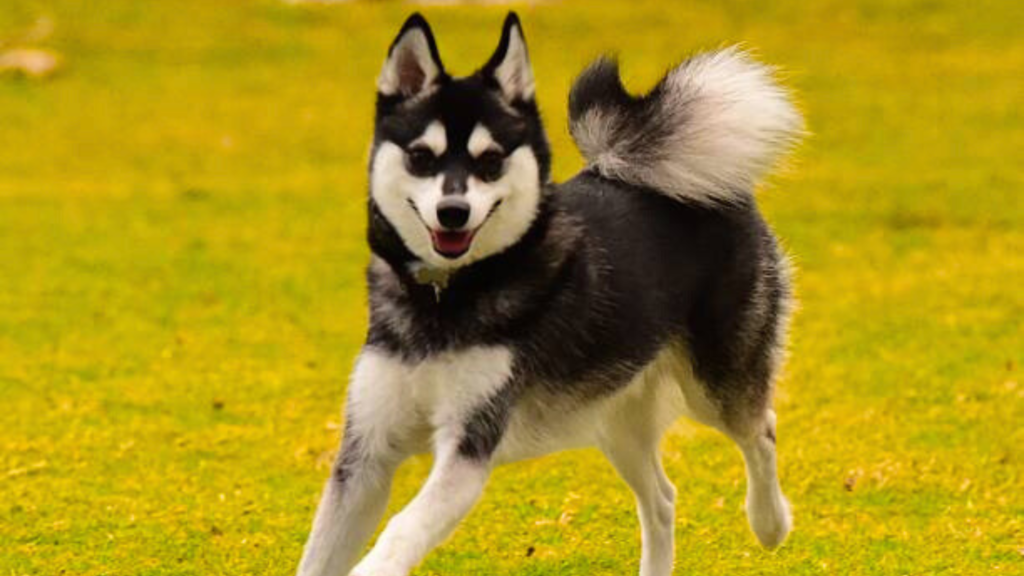
After their first birthday, growth slows down dramatically, focusing more on adding lean muscle than gaining height or bone mass.
Male vs Female Alaskan Husky Weight Differences
Though every dog is unique, there are general trends between male and female Alaskan Huskies:
- Males tend to be larger, heavier, and more muscular than females.
- Females are often more petite and slightly lighter, giving them a speed advantage in sprint racing.
Example:
- A healthy male Alaskan Husky might weigh 50–60 pounds fully grown.
- A healthy female might weigh 40–50 pounds fully grown.
Because of this difference, it’s important to compare your pup’s growth to gender-specific averages when tracking weight. To discover what activities bring joy to Australian Cattle Dogs, check out this detailed guide on What Do Australian Cattle Dogs Love.
Factors That Influence Alaskan Husky Weight
Many factors come into play when determining how big your Alaskan Husky will get. Let’s explore the most important ones.

1. Genetics
Alaskan Huskies are not purebred, and their bloodlines can include Siberian Huskies, Greyhounds, German Shorthaired Pointers, Alaskan Malamutes, and more.
A pup with more Malamute ancestry may be bulkier, while one with more Greyhound lineage will be slimmer and faster.
If you know your puppy’s parents’ size, that’s usually the best predictor of their future weight.
2. Diet
Proper nutrition is essential during the critical growth windows of puppyhood. Puppies who are fed high-quality, balanced diets typically grow steadily and develop strong bones and muscles.
Conversely, poor nutrition (whether too little or too much) can result in stunted growth or obesity.
3. Activity Level
Alaskan Huskies are born athletes. Dogs that are highly active, especially those training for sledding or agility work, tend to develop more lean muscle mass, making them slightly heavier — but healthier.
A sedentary Husky may weigh less initially but risk unhealthy weight gain later if under-exercised.
4. Health Issues
Conditions like parasites, digestive disorders, or genetic diseases can slow down a puppy’s growth.
That’s why regular vet checkups and vaccinations are crucial during the first year. Find out what color collar looks best on a Rottweiler to complement their bold appearance and highlight their unique features.
How to Tell If Your Alaskan Husky Is at a Healthy Weight
Forget the number on the scale for a moment. A healthy body shape is often a better indicator than a strict weight range.
Here’s a simple guide:
- Ribs: You should be able to feel your Husky’s ribs easily but not see them protruding.
- Waist: Viewed from above, your Husky should have a noticeable waistline (an hourglass shape).
- Tummy tuck: From the side, the belly should tuck up behind the ribcage, not hang down.
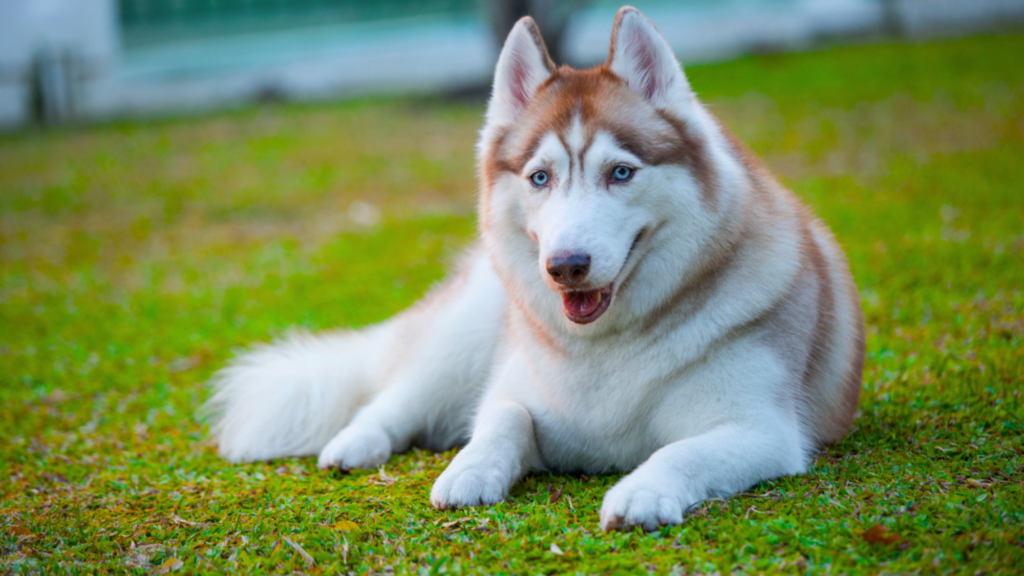
If your Husky looks like a sausage — wide all the way through — they’re likely overweight.
If you see every rib and vertebra prominently, they’re likely underweight.
Aim for that lean, athletic silhouette they are famous for!
Healthy Weight Management Tips for Alaskan Huskies
Keeping your Alaskan Husky at a healthy weight is key to their longevity and happiness. Here’s how you can help:
1. Feed High-Quality Food
Choose foods rich in:
- Animal-based protein (first ingredient should be meat)
- Healthy fats like fish oil (omega-3 fatty acids)
- Limited fillers (no corn, soy, or by-products)
Avoid overfeeding — Huskies are famously efficient eaters and need fewer calories per pound than many dogs.
2. Exercise Every Day
Alaskan Huskies need at least 1–2 hours of vigorous exercise daily.
Without enough movement, they will not only gain weight but also become destructive from boredom.
Daily runs, hikes, bike rides, or dog sports are essential.
3. Regular Weigh-Ins
Weigh your Alaskan Husky monthly, especially during the first 18 months.
Sudden weight changes can signal health problems early.
If you don’t have a pet scale, you can weigh yourself holding your dog and subtract your weight.
4. Adjust Diet With Age
As Alaskan Huskies enter adulthood, their calorie needs decrease slightly.
Monitor body condition and adjust food intake accordingly to avoid creeping obesity.
Older Huskies, especially those over 8 years, may also benefit from joint-support supplements like glucosamine. Learn what size collar for a Rottweiler is ideal by following this detailed guide to ensure a perfect fit for your dog’s comfort and safety.
Common Weight-Related Health Issues
Although Alaskan Huskies are generally hardy, weight imbalances can lead to:
- Hip dysplasia (from carrying too much weight)
- Arthritis (from excess joint stress)
- Heart disease (linked to obesity)
- Diabetes (uncommon but possible in overweight dogs)
Keeping your Husky slim can add years to their active life!
Alaskan Husky Puppies: Growth Spurts and Plateaus
Don’t panic if your puppy’s growth isn’t perfectly linear.
It’s normal for Alaskan Huskies to have:
- Rapid growth spurts (especially between 3–6 months)
- Plateaus (when they focus more on coordination and muscle building than height or weight)
As long as they stay active, eat well, and seem happy, these fluctuations are perfectly healthy.
If you notice sudden, extreme weight loss or gain without explanation, consult your veterinarian. Discover the best collars for Siberian Huskies for both style and comfort.
Fun Fact: Racing Huskies vs House Huskies
Did you know?
Alaskan Huskies bred for sprint racing tend to be:
- Lighter
- Slimmer
- Around 35–45 pounds
While Huskies bred for long-distance mushing (like the Iditarod) are:
- Stockier
- Slightly heavier
- Around 45–60 pounds
If your Alaskan Husky seems smaller or larger than others you’ve seen, it might be because of what type of working dog line they come from!
Real-Life Examples of Alaskan Husky Growth
- Bolt, a sprint-bred Alaskan Husky, weighed only 38 pounds at full maturity but could pull twice his weight in a sled race.
- Misha, a distance sled dog, filled out to 58 pounds by 2 years old and regularly competed in long treks across snowy wildernesses.
- Luna, a pet Alaskan Husky with no racing experience, leveled off at a lean and healthy 45 pounds and became a beloved hiking companion.
Each dog’s journey is different, and that’s part of what makes owning an Alaskan Husky so special. Learn how to put a collar on a Husky with these practical tips.
Final Thoughts: Trust the Process and Celebrate the Journey
Watching your Alaskan Husky grow from a mischievous ball of fluff into a strong, graceful adult is an unforgettable adventure.
While charts and numbers are helpful, the real goal is raising a healthy, happy, and confident dog who can run, jump, and explore the world with you. Find out the best collars for Cane Corsos to suit their unique needs.
Remember:
- 12 months is when your Husky will look almost full-grown.
- 18 months is when they’ll reach full maturity.
- Regular check-ins, high-quality food, consistent exercise, and love will guide them safely through each stage.
By understanding the Alaskan Husky weight chart and knowing what to expect, you’re already one step closer to helping your extraordinary companion live their best life — strong, free, and forever young at heart. 🐾❄️

